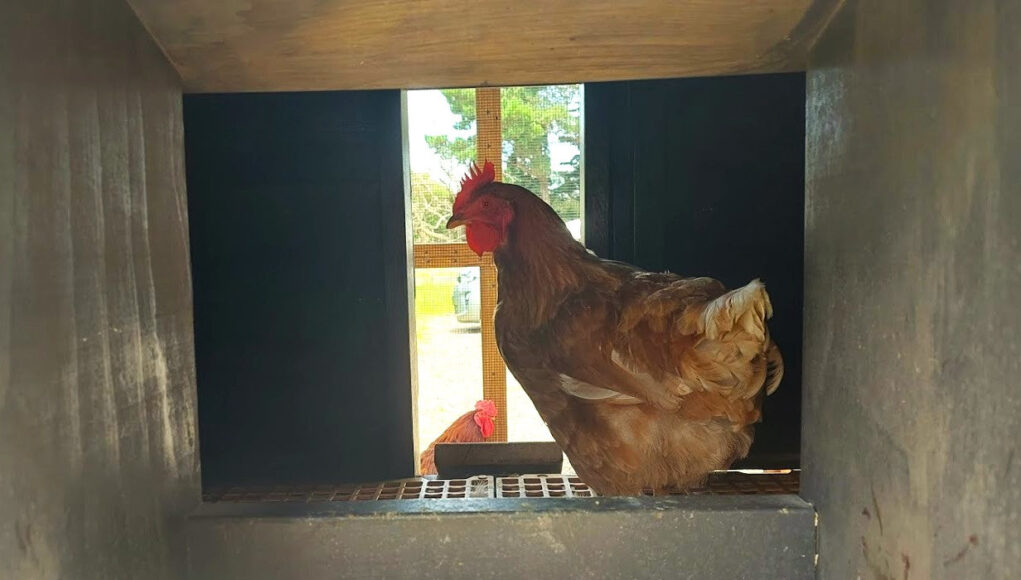When it comes to raising a healthy flock of chickens, introducing chicks to nesting boxes is an essential step. These boxes not only provide a safe space for laying eggs but also play a crucial role in the overall well-being of your birds. In this comprehensive guide, we’ll explore everything you need to know about nesting boxes, ensuring your chicks transition smoothly into their new homes.

The Importance of Nesting Boxes
Nesting boxes are more than just a place for chickens to lay eggs. They offer a safe, comfortable environment that encourages egg-laying behavior. By providing your chicks with the right nesting boxes, you can help them develop healthy laying habits early on.
Choosing the Right Nesting Box
When choosing a nesting box, consider factors such as size, material, and location. The box should be large enough for your chick to move around but small enough to feel secure. Wood and plastic are popular materials, each with its own advantages.
Benefits of Nesting Boxes
Beyond egg-laying, nesting boxes help reduce stress in your flock. They offer a private space for your chickens, which can prevent aggressive behavior and pecking. Moreover, they keep eggs clean and protected from potential predators.
Preparing to Introduce Chicks to Nesting Boxes
Before introducing your chicks, ensure the nesting boxes are clean and well-maintained. This helps prevent the spread of disease and creates a welcoming environment for your birds.
Setting Up the Nesting Area
The location of your nesting boxes is crucial. Place them in a quiet, dimly lit area to mimic a natural nesting environment. Ensure they are easily accessible yet protected from the elements.
Using Organic Bedding
Organic bedding is a great choice for nesting boxes. It provides a soft, comfortable surface and helps absorb moisture, keeping the boxes clean and dry.
Introducing Chicks to Nesting Boxes
Once your nesting boxes are ready, it’s time to introduce your chicks. Start by placing them gently inside the box, allowing them to explore and get comfortable.
Encouraging Nesting Behavior
Encourage your chicks to use the nesting boxes by placing fake eggs or golf balls inside. This simulates the presence of eggs and can prompt laying behavior.
Monitoring Progress
Keep an eye on your chicks as they adjust to their new environment. Look for signs of stress, such as excessive pecking or reluctance to enter the box. If issues arise, consider adjusting the box or its location.
Common Challenges and Solutions
Introducing chicks to nesting boxes can come with challenges. Some chicks may be hesitant to use the boxes, while others might exhibit aggressive behavior.
Addressing Hesitation
If your chicks are hesitant to use the boxes, try placing treats or food inside to entice them. Gradually, they’ll associate the boxes with positive experiences.
Tackling Aggression
Aggressive behavior can be minimized by ensuring each chick has enough space and resources. Regularly monitor your flock to prevent bullying and ensure a peaceful environment.
Maintaining Nesting Boxes
Regular maintenance of nesting boxes is essential for the health of your flock. Clean the boxes weekly, removing old bedding and replacing it with fresh material.
Preventing Pests
Pests like mites and lice can infest nesting boxes. Use natural repellents and maintain cleanliness to keep these unwelcome guests at bay.
Advanced Tips for Nesting Success
For optimal results, consider advanced strategies such as rotating nesting boxes or using specialized nesting materials.
Rotating Nesting Boxes
Regularly rotating your nesting boxes can prevent the buildup of pests and keep the environment fresh. This involves moving boxes to different locations within the coop.
Specialized Nesting Materials
Some chicken owners use specialized nesting materials, like herbs or essential oils, to enhance the nesting experience. These materials can provide additional health benefits for your chicks.

FAQs
Why aren’t my chicks using the nesting boxes?
Chicks may avoid nesting boxes due to location, size, or discomfort. Ensure boxes are appropriately sized and placed in a quiet, comfortable area.
How often should I clean the nesting boxes?
It’s recommended to clean nesting boxes weekly. Regular cleaning prevents disease and keeps the environment inviting for your chicks.
What materials are best for nesting boxes?
Wood and plastic are popular choices for nesting boxes. Each material offers unique benefits, so choose based on your specific needs and environment.
Introducing your chicks to nesting boxes is a journey that requires patience and care. For more tips and insights, visit Longbourn Farm. By following these guidelines, you’ll create a nurturing environment that supports the health and happiness of your flock.
This article contains affiliate links. We may earn a commission at no extra cost to you.











